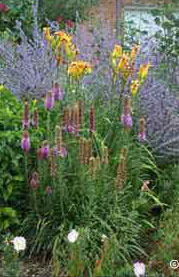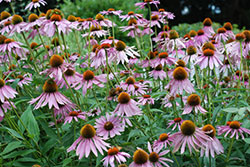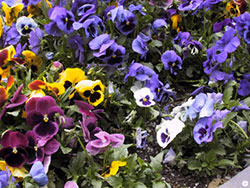Many flowers enliven xeriscape landscapes. They can be mixed with shrub borders, planted as edgings, or used with mulches as alternatives to turf areas. Perennials and annuals that meet the low-water requirements of xeriscaping are available at most nurseries and garden centers.
What should I do before planting flowers?

Before planting flowers, improve the soil to foster root growth. Locate the garden in an area that receives sufficient light for flowers. Most perennials and annuals require full sun; only a few will flower in partial shade.
What perennials are best to plant?
Many perennials are native to the west and are better known as North American wildflowers. Western natives include penstemons which produce red, orange, white, blue and lavender flowers. Other western natives include crimson-flowered beebalm, and red-orange blanket flower.

Purple coneflower, poppy mallow and yellow black-eyed Susan from the Great Plains adapt well here. Other North American natives for xeriscapes include New England aster, perennial flax and gayfeather.
Lavender, iris and red valerian are perennials from the Mediterranean region that work well in Colorado.
Which perennials grow in shade?

Xeriscape perennials that grow well in partial shade include candytuft, columbine, harebell, pansy, gasplant, cardinal flower and golden banner.
What annuals are good to plant?
But don’t forget the annuals. Cosmos, sunflowers, marigolds, globe amaranth, zinnias, moss rose, California poppy, sweet alyssum and bachelor’s button are the most reliable flowers for hot, dry exposures. Where soils are shaded and cooler, use annuals such as lobelia, pansy, and forget-me-not.
Disregard the old rules about separating annuals from perennials from small shrubs. Mix and match all types of flowers for a brilliant display of xeriscape color!
For more information, see the following Colorado State University Extension fact sheet(s).



